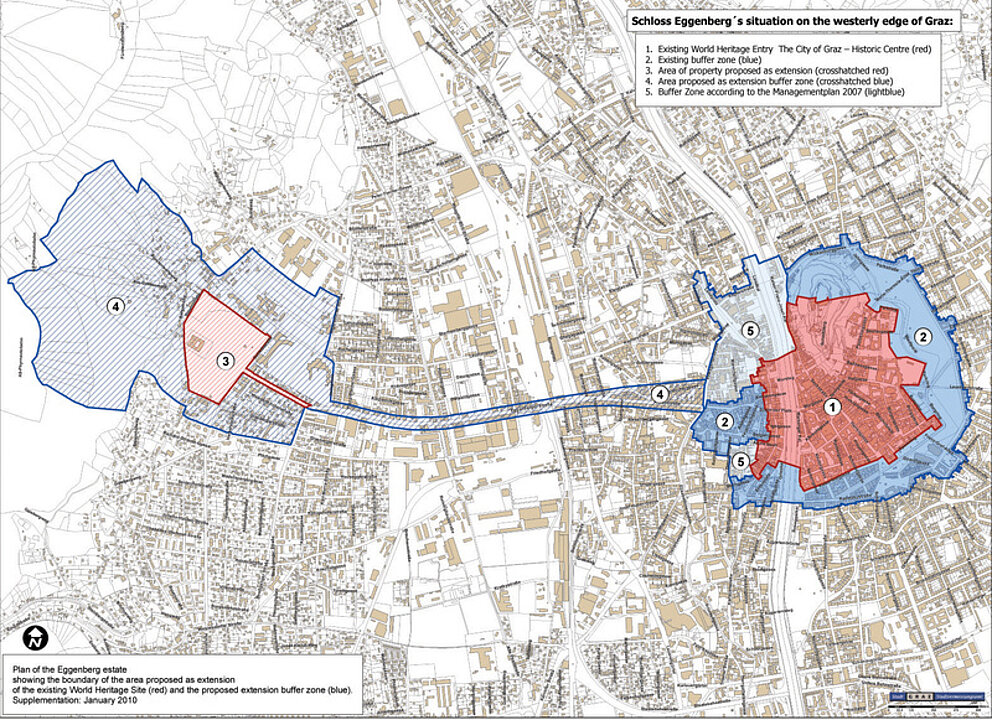We are very proud that, at the 34th session of the World Heritage Committee in Brasília, the existing World Heritage site "Graz – Historic Centre" was extended to include Schloss Eggenberg.
UNESCO World Heritage
Simply the best
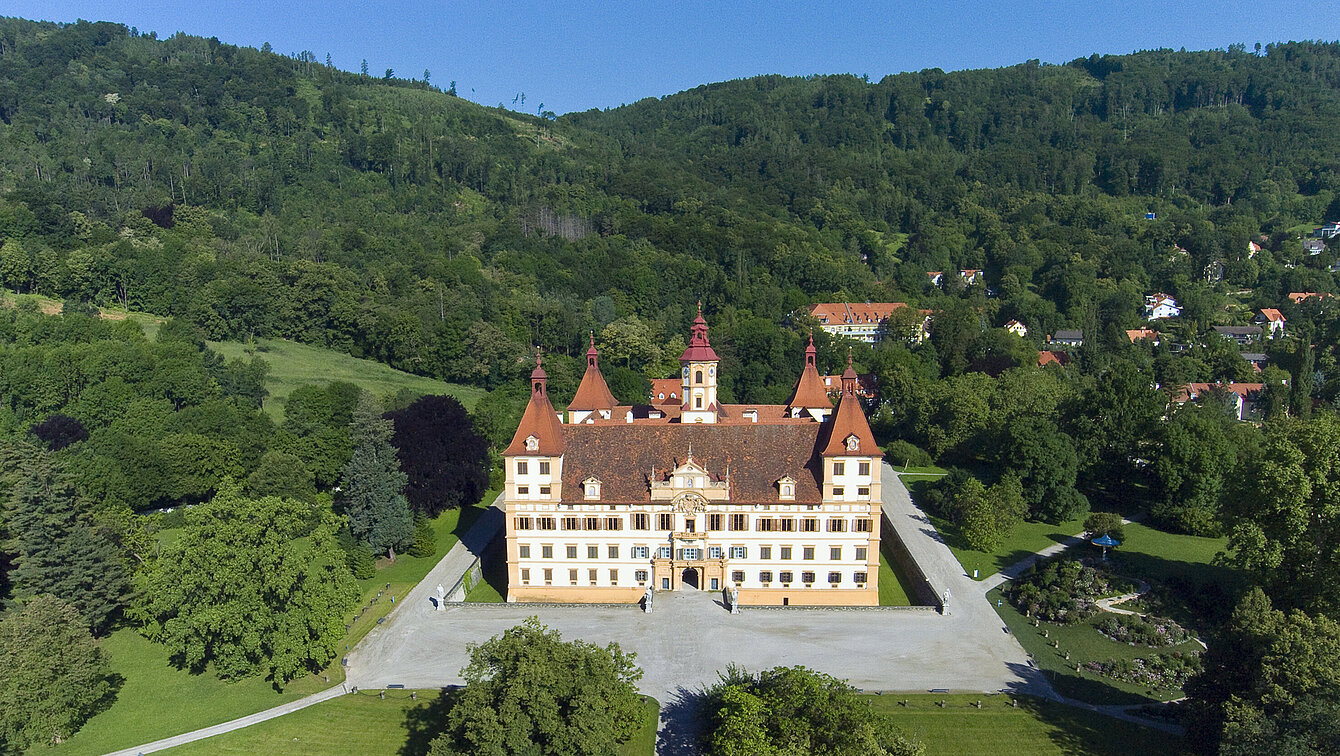
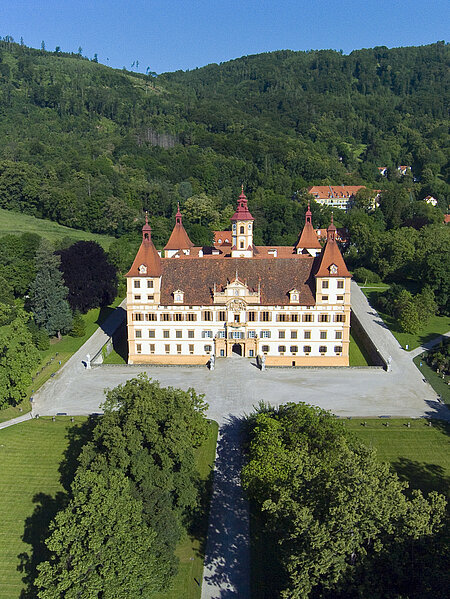
Image Credits
Highest seal of quality
The extended World Heritage site is listed as before under criteria (ii) and (iv). The details are set out in the accompanying citation:
The City of Graz – Historic Centre and Schloss Eggenberg bear witness to an exemplary model of the living heritage of a central European urban complex influenced by the secular presence of the Habsburgs and the cultural and artistic role played by the main aristocratic families. They are a harmonious blend of the architectural styles and artistic movements that have succeeded each other from the Middle Ages until the 18th century, in the many neighbouring regions of Central and Mediterranean Europe. They embody a diversified and highly comprehensive ensemble of architectural, decorative and landscape examples of these interchanges of influence.
Adding Schloss Eggenberg to the existing Graz historic centre entry was proposed as the house and Eggenberg family were inseparably associated with the history of Styria and its capital. The Eggenbergs exercised an important influence on the political, economic and above all artistic development of the city for centuries, and their residence on the edge of the city is the principal witness of that.
A large-scale work of art
Built post-1625 by north Italian architect and artist Pietro de Pomis as a residence for imperial governor Hans Ulrich von Eggenberg (1568-1634), Schloss Eggenberg was intended as a political statement. It was a power house, the sophisticated legitimation of dynastic rule. The house was designed as a huge allegory, a symbolic representation of the universe, where the erudite client set out his notion of an ideal world in an age of chaos and disintegration.
Crucial for the status of Schloss Eggenberg as a large-scale work of art is a series of 24 state rooms centred on the large Planetary Room. The interiors are Baroque and Rococo, but today they constitute a uniformly magnificent ensemble of great appeal largely unchanged since the 18th century. The most notable feature is the series of over 500 17th-century ceiling paintings, forming a highly ambitious and complex pictorial programme of singular quality and eloquent of the early Baroque view of the world. The quality and extent of the surviving authentic fabric of the Eggenberg piano nobile is a particular stroke of good fortune. It was rated ‘excellent’ by the World Heritage Committee.
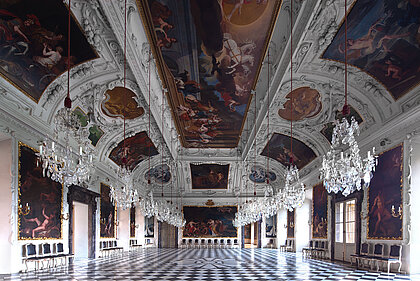
Image Credits
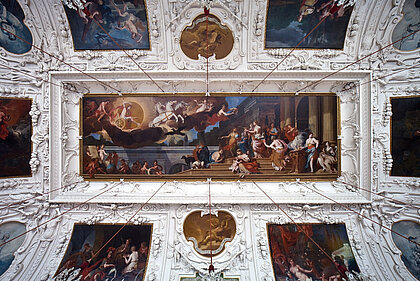
Image Credits
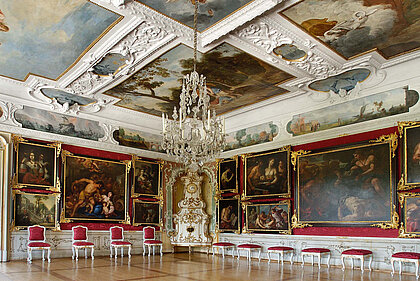
Image Credits
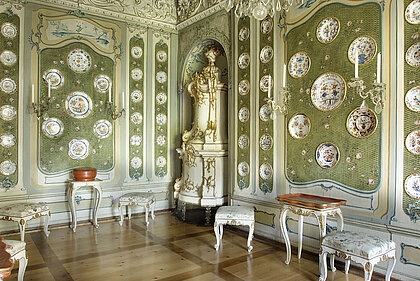
Image Credits
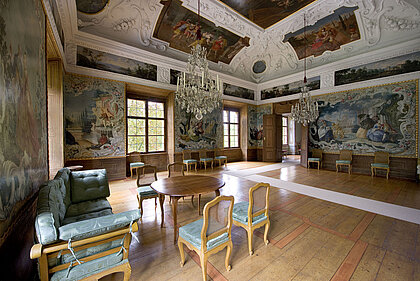
Image Credits
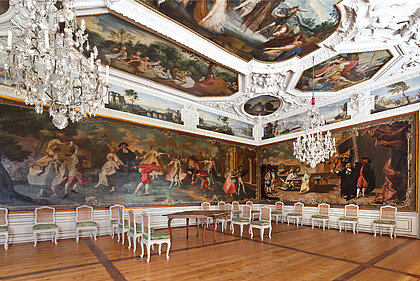
Image Credits
Hibernating a palace or why are the state rooms closed during the winter?
Since 1953, the visitor season at Schloss Eggenberg has always ended on 31 October, with the state rooms remaining closed until Easter of the following year. The reason is simple: they are dark and cold – but not because we're too lazy to turn on the heating.
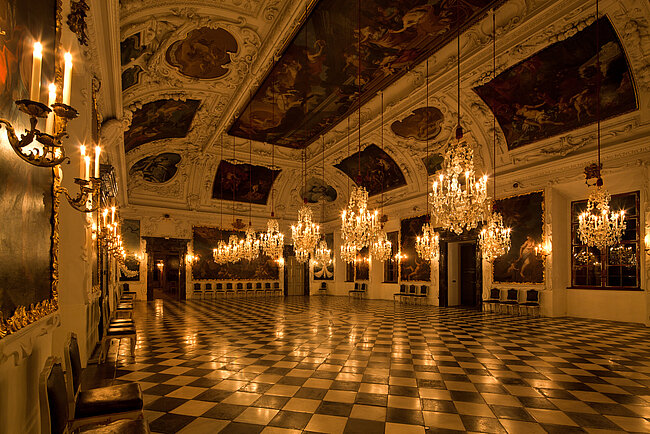
Image Credits
UNESCO World Heritage – the past’s present to the future
The UNESCO World Heritage Convention is the most important internationally recognized, binding instrument for the protection of mankind’s cultural and natural heritage. It has so far been signed by 187 countries. The guiding principle of the Convention is to regard the outstanding cultural and natural sites of the world not as the property of individual countries but as notionally belonging to mankind as a whole.
Sites are selected for the World Heritage list solely on the basis of their importance as the best possible examples of the cultural or natural heritage of the world.
The World Heritage Committee decides once a year on new admissions to the list. Its members are experts from 21 countries selected from the signatory states. The Committee is advised by the International Council on Monuments and Sites and the International Union for the Conservation of Nature, which evaluate submissions. Among vital criteria for acceptance are uniqueness and historical authenticity in the case of cultural monuments and integrity (i.e. intactness) in the case of a natural site. Apart from information about the current state of conservation, a detailed management plan also has to be submitted. An essential feature is that not only the site itself (core zone) but also the surrounding buffer zone should form part of the World Heritage site.




















